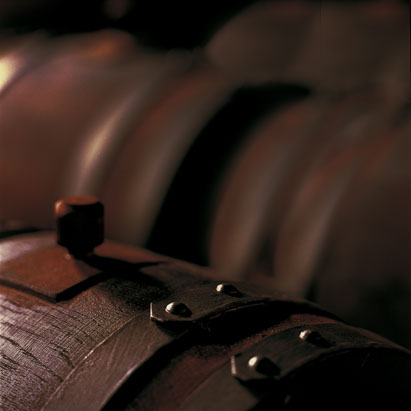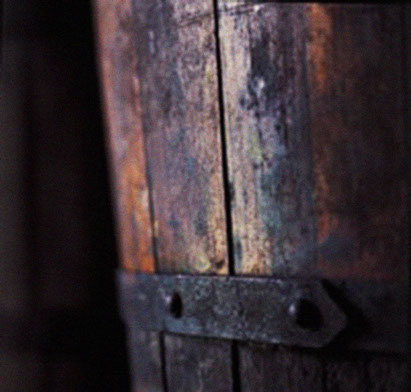

Verso la fine dell’estate l’uva matura viene raccolta a mano, riposta in casse e lavata. La pigiatura è morbida affinché le bucce e i vinaccioli non liberino sostanze che ostacolano il processo di acetificazione. Il mosto ottenuto viene fatto sobbollire per lunghe ore, lasciato raffreddare, filtrato e messo a dimora in botti di rovere. Nel cuore della fattoria, c’è l’Acetaia, dove in botti di legno pregiato, come rovere, acacia, robinia, ciliegio, gelso e ginepro, in modo semplice e naturale gli Aceti assorbono i caratteristici aromi dei legni, affinandosi e invecchiando. Prima di essere messi in commercio, i Balsamici vengono sottoposti ad una serie di controlli ed analisi chimiche che ne certificano la qualità. Raggiunto il giusto grado di acidità, densità ed aromi, il Mastro Acetaio preleva da ogni botte la quantità da imbottigliare.
Toward the end of the summer, the ripe grapes are hand picked, crated and washed. They are pressed just lightly in order to avoid the skins and pips releasing substances that could hinder the acetification process. The must is then simmered for many hours, left to cool, filtered and matured in oak barrels.
In the central hub of the farm, the Vinegar Loft (Acetaia), the vinegars are put in casks of different woods, such as oak, acacia, cherrywood, mulberry and juniper; here they absorb the characteristic aromas of the woods in a natural way, slowly refining and maturing. Before apprearing on the market the balsamic undergoes a serie of controls and chemical analysis to ensure its quality. When the correct levels of acidity, density and aroma are achieved, the Master Vinegar Maker draws off from each barrel the amount required for bottling.
Gegen Ende des Sommers, werden die reifen Trauben mit der Hand geerntet, in Kisten gelegt und gewaschen. Eine sanfte Kelterung verhindert, dass die Sxchalen und die Kerne Substanzen freisetzen, die den Essigsäuregärungsprozess behindern könnten. Der erhaltene Most wird stundenlang aufgekocht, zum Abkühlen stehen gelassen, gefiltert und in Eichenfässern gelagert. Im Herzen des Guts, dem Hessigkeller, verfeinern sich und ablagern die Essige, in Fässern aus hochwertigen Hölzern wie Eiche, Akayie, Robinie, Maulbeerbaum und Wacholder.
Vor der Vermarktung werden die Essige einer Reihe Kontrollen und chemischer Analysen unterzogen. Nachdem der richtige Säure-, Dichtigkeits- und Holzaromengrad bestimmt worden ist, entnimmt der Essigbraumeister die nötige Menge aus jedem Fass, um sie dann in Flaschen abzufüllen.